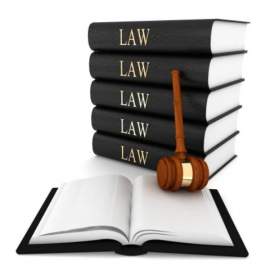
Litigation Pleading In Depth

Popular In Paralegal
Defendants Right To Appeal Common Law Heritage Functions Of Law Infancy Insanity Intoxication Judicial Interpretation Common Law Legal Analysis Litigation Pretrial Motions Third Party Rights Roles Of Paralegals In Adr Legal Research Validation Paralegal Classification Of The Law
After the preliminary matters of a lawsuit are addressed and everything is in order, a lawsuit can then be properly filed. Once the filing process in completed, the next step in the litigation process in referred to as pleading.
A pleading is a formal written statement that is filed with the court system by the involved parties in a particular dispute or civil action. These written statements can be categorized as complain, demurrer, or answer. The statements essentially mark the process by which a lawsuit is levied, and the filings of these statements are what can lead to a court trial.
A complaint is the first pleading that is filed by the plaintiff, which marks the beginning point of a lawsuit. The complaint essentially provides for the plaintiffs intentions and arguments regarding a particular dispute. The complaint will contain information regarding that the plaintiff is seeking either damages or equitable relief from the identified defendant and related parties. The complaint will also provide for the nature as to why the plaintiff is seeking damages or relief, and provide for the legal justifications for doing so.
The plaintiff is responsible for selecting the appropriate venue and jurisdiction that is to hear the legal dispute. The complaint is filed with the appropriate court's clerk office. After reviewing the written statements, the clerk will then sign a summons. A summons is a legal document that is issued by the court, which is essentially a notice that the identified defendant in the complaint is to appear in court, and that he/she is being sued by the plaintiff.
The summons includes a copy of the complaint, which provides the defendant for the reasons of the claim. Once beings served with the summons and complaint, the defendant must then file an answer. An answer is the defendant's written statement which provides for their arguments or defense against the plaintiff's claims. The answer may also contain any challenges regarding a particular courts jurisdiction and its involvement with this particular type of legal dispute, as well as any counterclaims that the defendant may wish to levy against the plaintiff. The answer is also subject to a time limit in which the defendant is responsible to adhere to and file the answer within the specified amount of time.
The defendant's answer must also respond to the claims that the plaintiff has submitted, and must either admit, deny, or plead a lack of sufficient evidence. However, the defendant also has the right to dispute the complaint itself, and may file for a motion for dismissal. A dismissal must also be filed within the specified time limit, as if it were prescribed as an answer.
The courts must then decide whether the defendant's grounds for dismissal a valid, and if they are not, the defendant must file an answer. Pleadings are typically drafted by the involved parties' litigation lawyer or attorney. However, as per Constitutional law, individuals may choose to represent themselves in court, which is known as per se. For those choosing to appear in court per se, many courts can provide for a per se clerk, which aids those choosing to represent themselves without the assistance of an attorney.
NEXT: What You Must Know About Public Interest Litigation





















